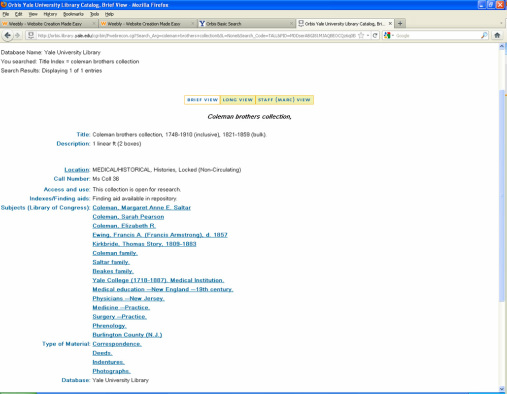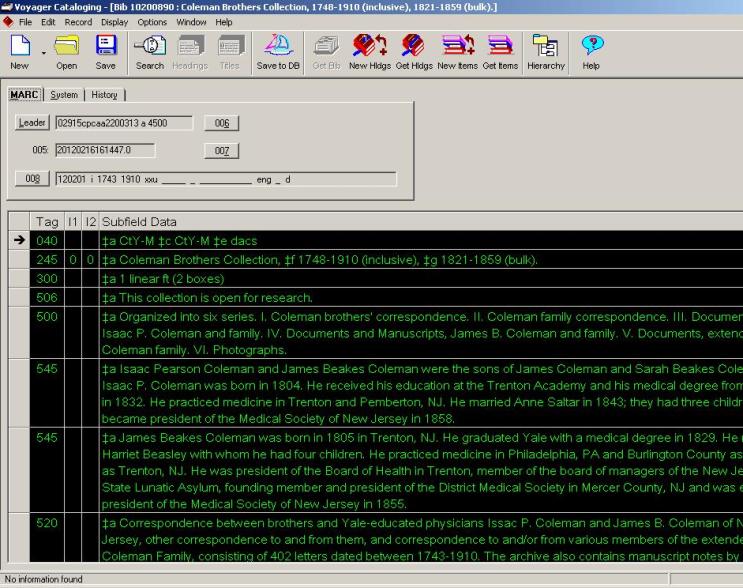I used LCSH and AAT (The Getty) for creating access points to the archive. All the access points in the catalog database also had to be entered into the finding aid, with the appropriate XML tags for name heading, subject heading, genre term, etc. This is how the final product displays in Orbis:
Toby set me up on her computer which has XmetaL installed, an Encoded Archival Description (EAD) creation tool customized for Yale. I worked on both the catalog record and I got started on the finding aid. They are imperfect, but I can take full credit for them!
Below is my new catalog record in staff view What records there were in OCLC were minimal or core level. I updated and added subject headings where necessary. None of them had 050 fields, so I also had the opportunity to assign call numbers myself.
The first book on this list had a single LCSH, 'nervous system' which when I searched for it, yielded titles both classed as QM and RC. Eventually I chose QM541, because the book did not seem to primarily be concerned with pathology, so much as the physiology of the nervous system. Finally, author cutters looked impossible to fit into the legacy scheme where the pub date followed by the first initial was used... until Melissa reminded me that these books are not going into a browse-able collection. Just put them on the shelf some place where it makes sense for them to be, she pointed with a broad gesture. Once again, the trees managed to obscure the forest for me! Stromeyer, G. Friedrich Louis. (1840). On the combination of motor and sensitive nervous activity: or, on the production of sensations by motions. Parsons, H. Franklin. (1891). Report on the influenza epidemic of 1889-90. London: H.M.S.O., 1891. Přibram, A. (1899). Der acute Gelenkrheumatismus =: (Rheumatismus articularis acutus). Wien: Hölder. copy 2 Hirsch, A. (1860-64). Handbuch der historisch-geographischen Pathologie. Erlangen: F. Enke. |


 RSS Feed
RSS Feed